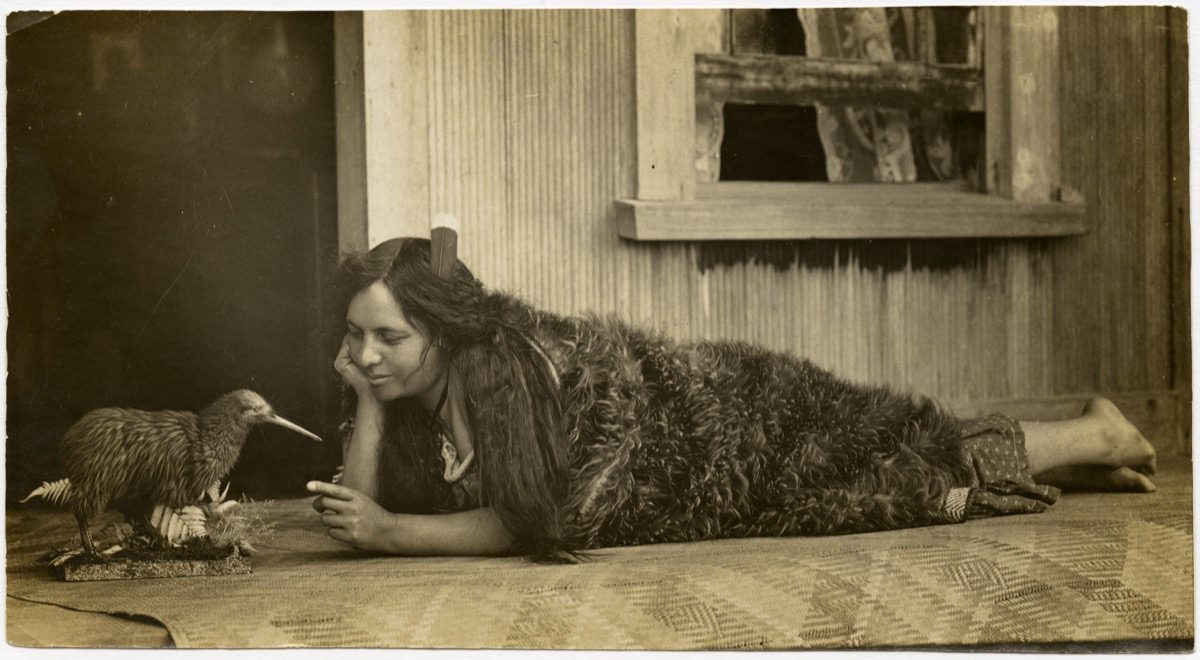In this post we take a closer look at the life and work of Maori guide and anthropologist Makereti (1873-1930), one of the women anthropologists who inspired Mariana Castillo Deball’s exhibition Between making and knowing something.
Deball was inspired by the archives of four women anthropologists held across the Pitt Rivers Museum collection and the Smithsonian Institute collection in Washington DC. Find out about the other pioneering women over the coming weeks as we share their stories as part of this series.
–
Makereti (1873-1930)
Makereti was born Margaret Pattison Thom, to a highborn Maori mother, Pia Ngarotu Te Rihi, and a retired English army officer, William Arthur Thom. She became a famous tour guide in New Zealand, known for escorting visitors through the geyser valley of Whakarewarewa near Rotorua.

While working as a tour guide she became known as Maggie Papakura, naming herself after the ‘Papakura’ geyser when asked about her original Maori name. (A geyser is a vent in the Earth’s surface that periodically ejects a column of hot water and steam).

She established a career as a highly regarded ambassador and interpreter for Maori culture in the late Victorian period.
In 1924 Makereti enrolled as an anthropology student at the University of Oxford and went on to donate her personal collection of wood carvings, weapons, ornaments, feathers and flaxen coats and other Maori possessions she brought with her from New Zealand to the Pitt Rivers Museum, which are still displayed today.
“Many times, the trajectory of the object and how it arrived at the specific place it is in now is really interesting, really rich, but somehow, it’s never integrated into the history of the display itself.” – Mariana Castillo Deball

For her exhibition, Mariana Castillo Deball has curated a selection of Makereti’s photographs held in the Pitt Rivers Museum collection.

These focus on her domestic life in New Zealand, from the interior of her whare (her Maori home) decorated with framed photographs of the famous Victorian figures she met, to group portraits of her Maori community and cloaks and carvings.



These photographs indicate the complex cultural heritage of Makereti as she moved fluidly between Maori and English-speaking worlds.

It’s interesting that these photographs are not, as they might seem, part of her ethnographic fieldwork on Maori culture, but are actually staged scenarios taken by a hired photographer.
 © Pitt Rivers Museum, University of Oxford (1998.277.102)
© Pitt Rivers Museum, University of Oxford (1998.277.102)

They convey Makereti’s entrepreneurial flair in fashioning her self-image, also evident in various attributed and chosen names she used throughout her lifetime.
Deball has previously repurposed antique museum display cases to playfully disrupt ideas around how museological displays frame or convey historical narratives. Here she comments once again on the role of displays to frame certain narratives, adding to the layers of representation Makereti herself played with throughout her life. All the vitrines in the exhibition are 19th century cases loaned from the Oxford University Museum of Natural History, first used when it opened to the public in 1861.
Read more about Makereti’s extraordinary life via the Pitt Rivers Museum website, here.
Listen to a brilliant radio documentary, about Makereti’s life, here.
